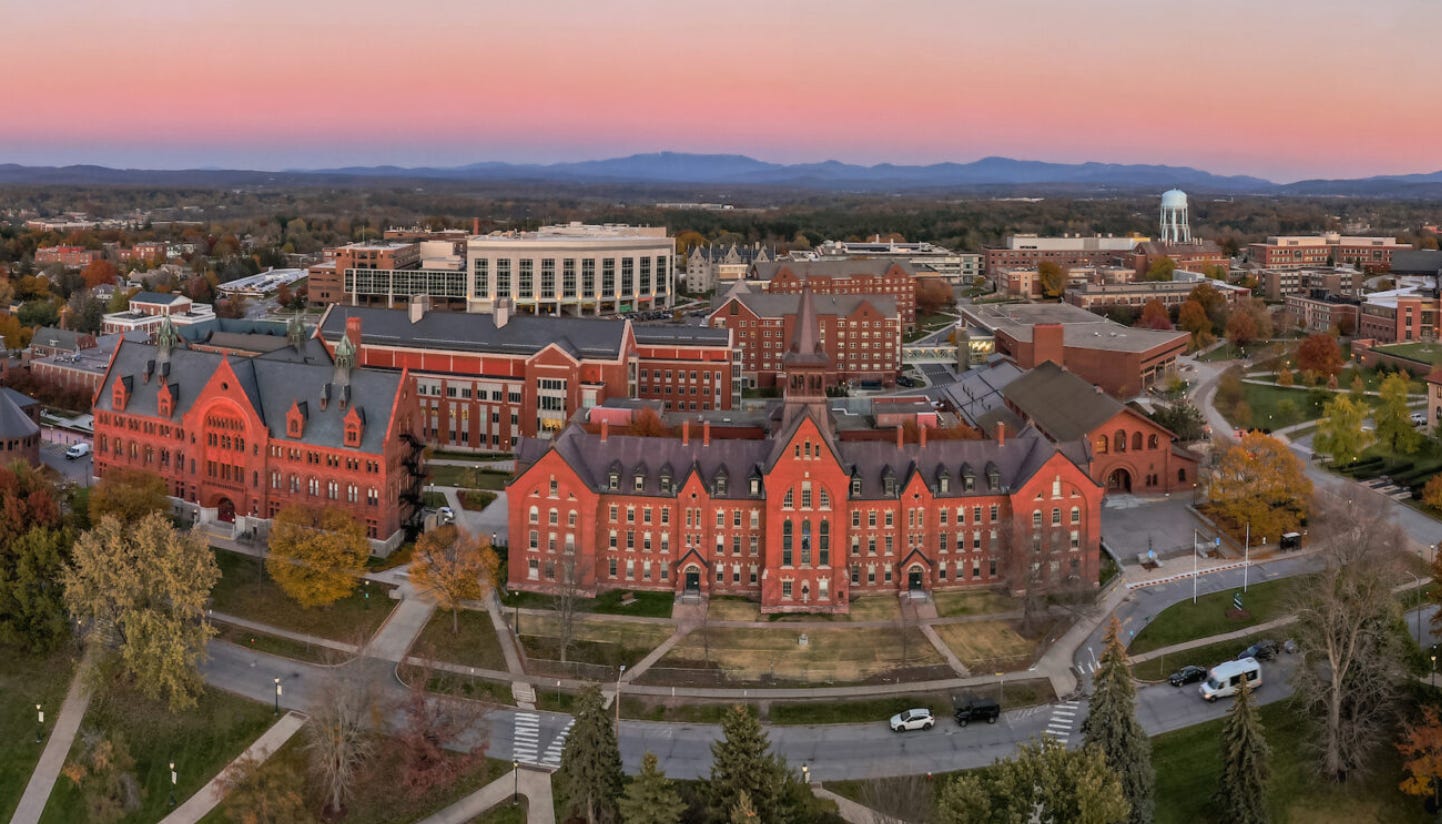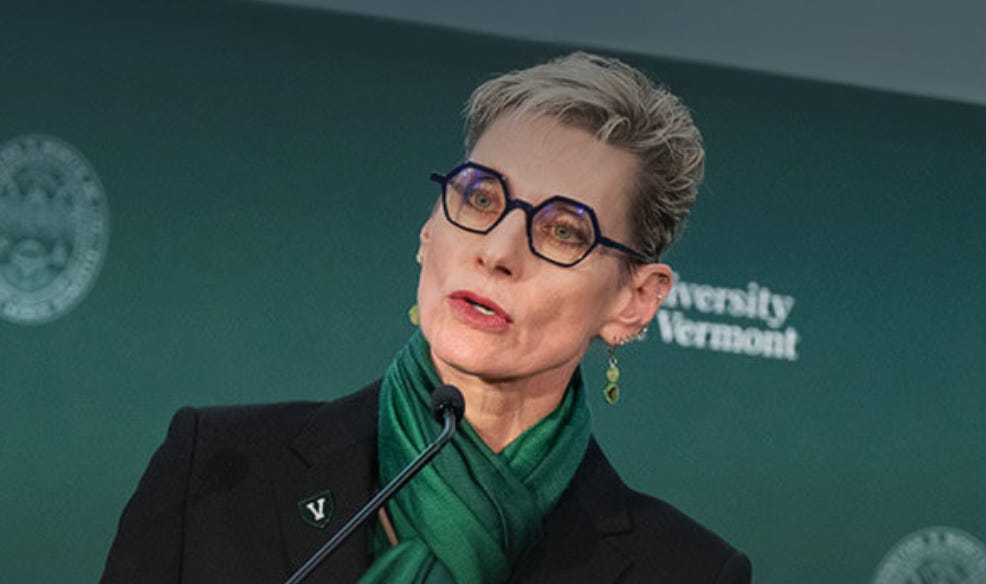Is UVM Ours? A Critical Review of New President Marlene Tromp's Promises for Vermont
A July poll conducted by Compass Vermont revealed that 50% of readers felt UVM should become a private school and 33% wanted to see more room for Vermonters rather than out of state students.
BURLINGTON, Vt. – In a recent interview, new University of Vermont President Marlene Tromp offered a defense of the institution's enrollment strategies, framing the high percentage of out-of-state students as an economic benefit for Vermont.
However, an analysis of the university's own data reveals that some key claims are inconsistent with reported figures, adding fuel to a long-standing debate over who the state's flagship university primarily serves.
The discussion, amplified by a recent critical article in Compass Vermont, centers on the fact that approximately 80% of UVM's first-year students come from outside Vermont. President Tromp, speaking with VTDigger, argued this is a strength, but a closer look at her specific assertions raises questions.
The "Two-for-One" Workforce Claim
A central point in President Tromp’s argument was the contribution of out-of-state graduates to the Vermont workforce. "For every Vermonter that graduates from UVM," she stated in the interview, "two of their out-of-state peers end up staying and working in Vermont."
This "two-for-one" ratio is not supported by the university's data. According to a report from UVM’s Office of Institutional Research and Assessment covering graduates from 2017 to 2021, Vermont residents who graduate are more than twice as likely to remain in the state's workforce. The report found that while 73.7% of in-state graduates were employed in Vermont post-graduation, only 33.4% of their out-of-state peers stayed to work in the state. The data indicates that while UVM does attract some out-of-state talent to Vermont, the retention rate is far below the level suggested by the president's claim.
Admissions: A Question of Access or Volume?
Addressing concerns that UVM may be too selective for its own residents—a theme echoed in the Compass Vermont article titled "Just Asking: With 80% of University of Vermont first-year students from out-of-state, who is Vermont's flagship university serving?"—President Tromp said, "...we accept a huge proportion of those [Vermont] students to UVM."
This statement is factually correct. According to UVM's 2023-2024 Common Data Set, 85% of Vermont first-year applicants were offered admission. However, the data also reveals that an even higher percentage of out-of-state applicants—94%—were accepted in the same cycle.
This suggests the enrollment imbalance is not a result of denying qualified Vermonters, but rather a strategy built on attracting a massive volume of out-of-state applications. For the Fall 2023 class, UVM received over 28,000 applications from non-residents compared to just over 1,000 from Vermonters. The high acceptance rate for both pools inevitably leads to a student body dominated by out-of-state students, who are the university's primary source of tuition revenue.
The Financial Reality
The Compass Vermont article points directly to the financial model as the core of the issue, and the numbers are stark. For the current academic year, UVM's estimated cost of attendance for an out-of-state student is $62,598, which is $26,308 more than the $36,290 cost for an in-state student, according to the university's website. This tuition differential is a critical component of the university's budget.
President Tromp acknowledged the importance of serving Vermonters by highlighting access initiatives like the "UVM Promise," which offers free tuition to Vermont families with incomes under $100,000. While this program provides a vital pathway for lower-income students, critics argue it doesn't change the fundamental financial structure that incentivizes the university to prioritize full-paying, out-of-state students to meet its operational budget.
As Vermont leaders continue to focus on solving the state's demographic and workforce challenges, the role and mission of its only public research university remain under intense focus. The data suggests that while UVM remains accessible to Vermonters who apply, its financial and recruitment models have created an institution that overwhelmingly serves students from beyond the state's borders.




Great piece.
Digger let her get away like a greased pig.
Never pressed her to expound on her rehearsed talking points.
Total word salad.